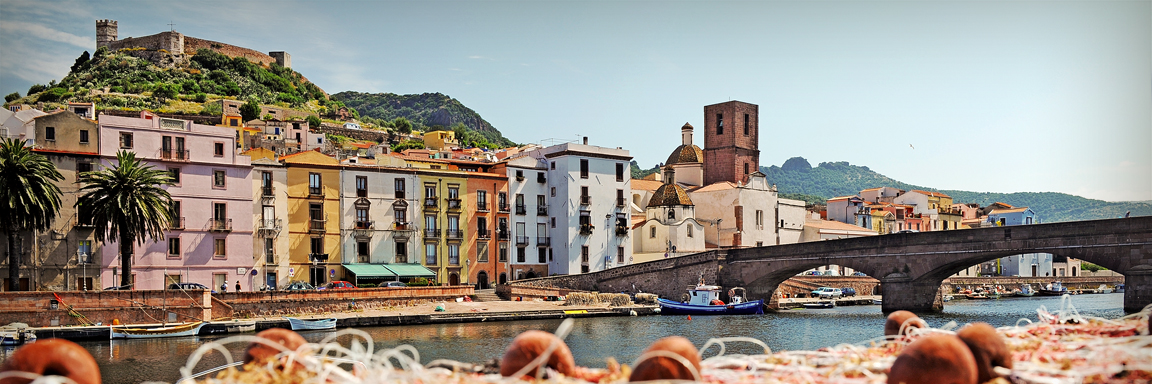
The Story
It is said that Bosa was founded by Calmedia, daughter of the legendary Sardus Pater. This is according to the legend fueled by a Spanish manuscript of an unknown author published in 1857 by Canon Giovanni Spano. Myths aside, the first concrete signs of the existence of Bosa date back to the ninth century BC, in an inscription of the lost city of Phoenician. The inscription was found in the area where the Bosa Vetus Romana was born, on the left bank of the Temo, only a few steps from the church of San Pietro extramuros (which is translated as ‘outside of the walls’).
The most remarkable archaeological sites Roman, consisting primarily of funerary artefacts, and it is clear that the area was inhabited in early prehistoric times due to the existence of the Domus de Janas, which are pre-historic chamber tombs or houses.
In Byzantine times the town resided safely on the left bank of the Temo, on the site of the church of San Pietro extramuros. In this time the city had the status of municipium was equipped with a river port, and stood on the left bank of the river Temo, exactly in the place of Messerchimbe. Today you can visit this site where there is now the ancient cathedral of St. Peter Extramuros, a splendid example of Lombard-Romanesque architecture built from 1062.
In the Middle Ages Bosa was the capital of Planargia, but after the eighth century it was abandoned due to Muslim raids. In 1112 Constantine Judge Torres granted the family of Malaspina Ligurian Spino Secco permission to settle on the Serravale hill, on the right bank of the river. Then began the slow process of traverso urbano, which led to the complete abandonment of the ancient city. This led to the castle and the village of Bosa Nova becoming almost its own state complete with its own laws collected in a statute. Subsequent events marked the becoming of Bosa; first, in 1328, the creation of Giudicato of Arborea (one of the four dividing hereditary regions of Sardinia), and then, in 1410, the transition to the Corona d’Aragona (the Crown of Aragon) reign. On 30 September 1499 the pragmatic Ferdinand the Catholic (King of Arogon) placed it between the royal cities, granting the privileges associated with that title. The King was married to Isabella Villamarina but died without a male heir, and so King Philip II of Spain seized the territory and brought it under royal heritage. From this point Bosa became, in effect, a real city, and ceased to be under the feudal authority.
